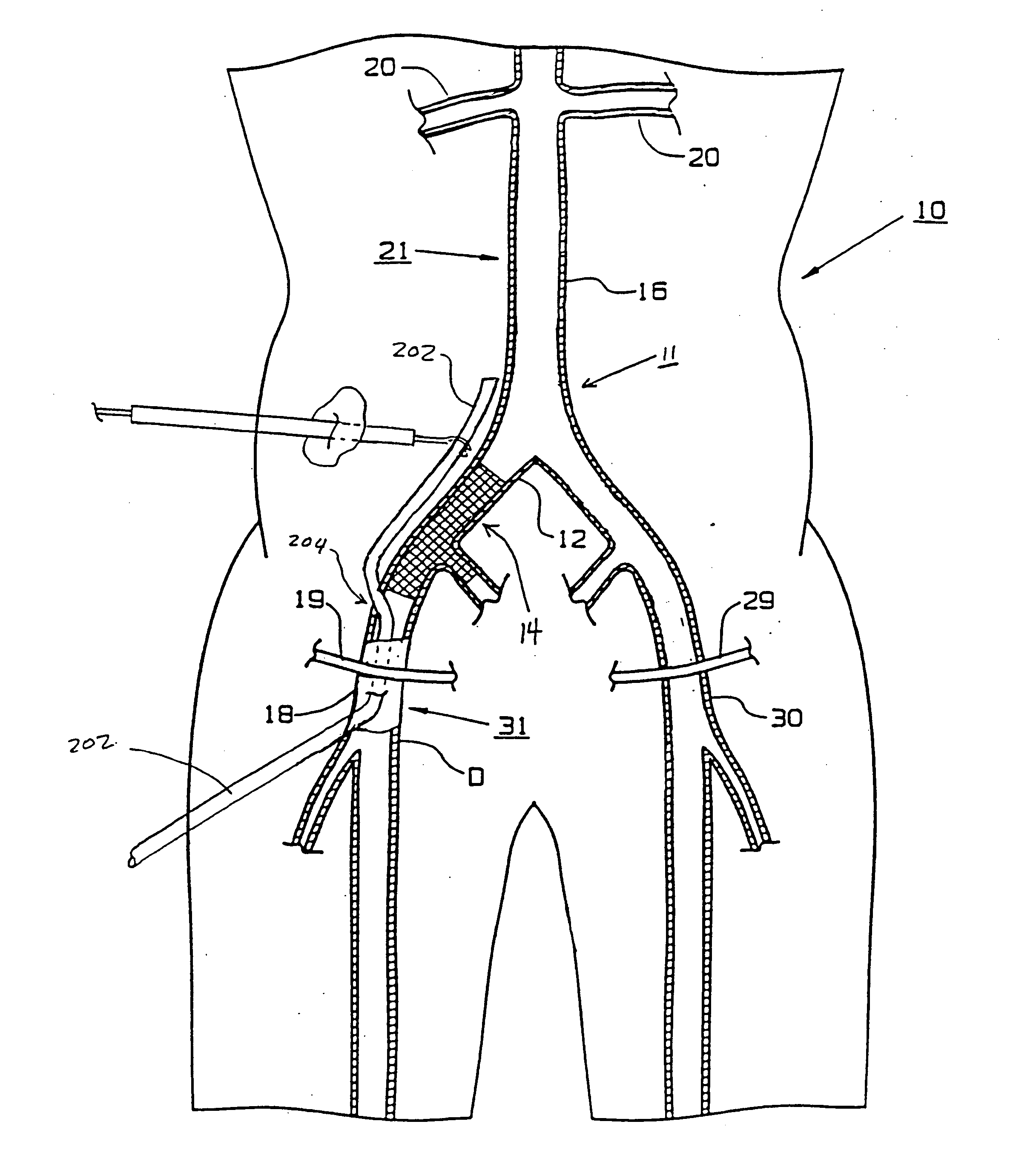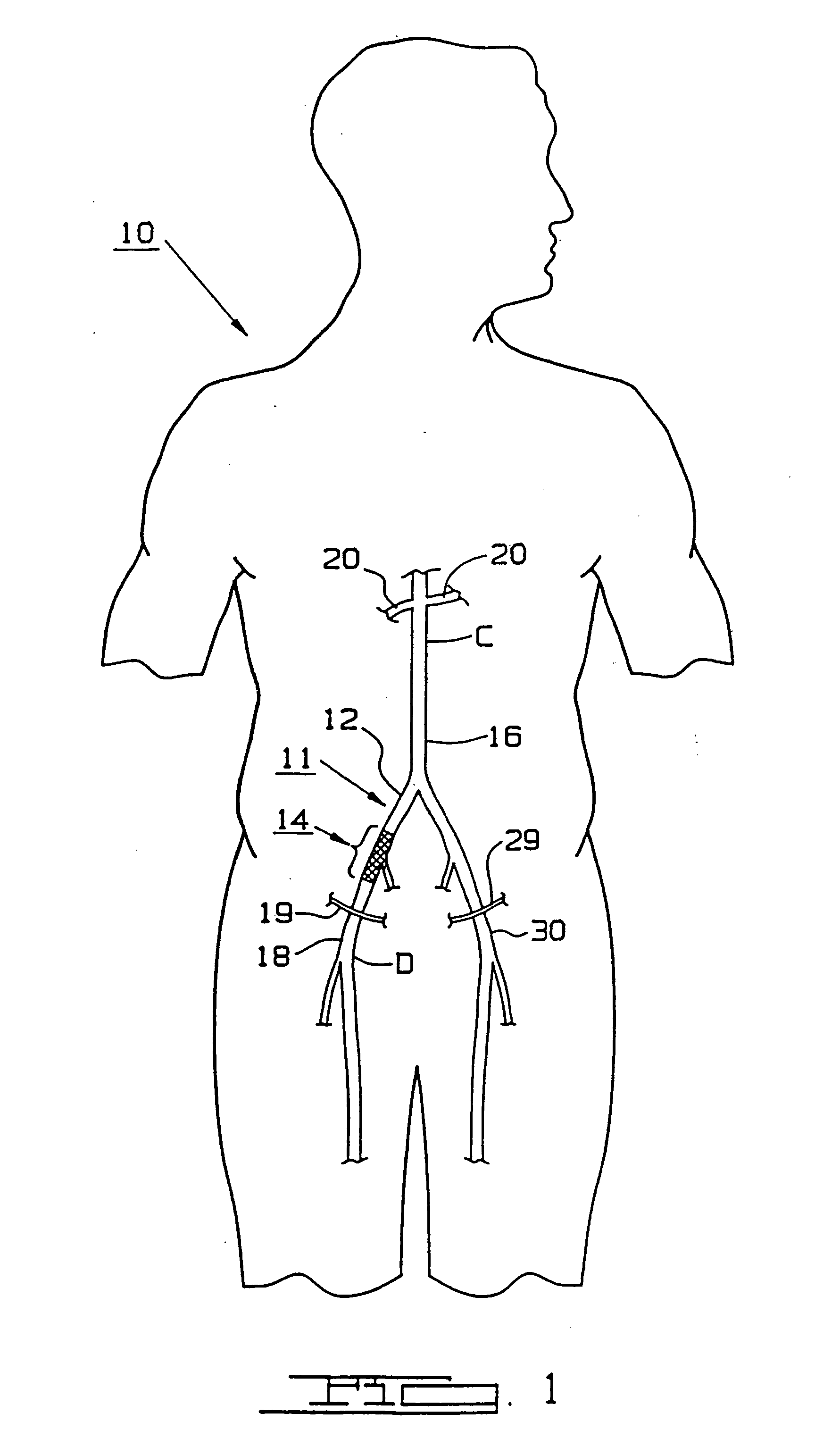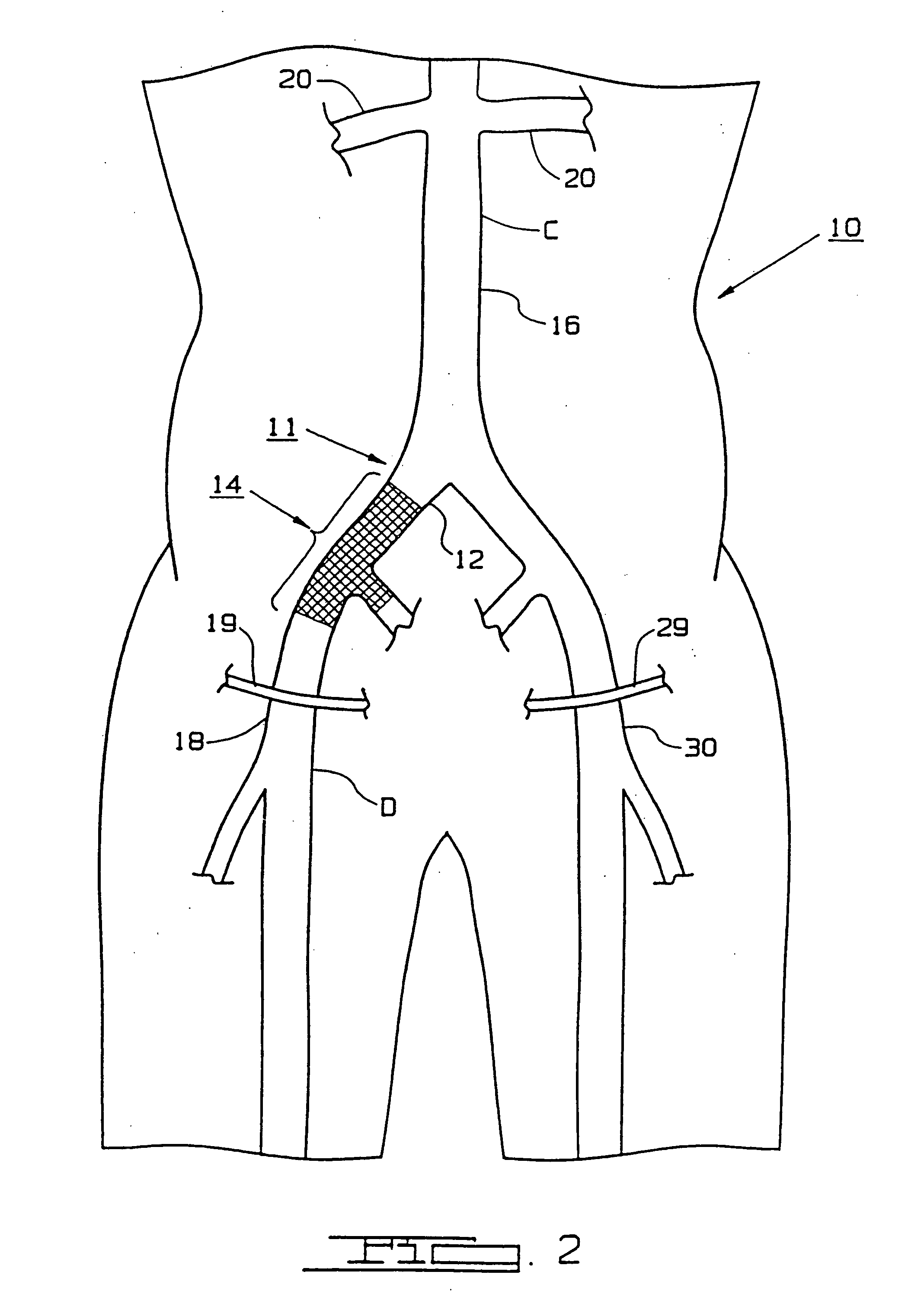Vessel grafting method
a grafting method and blood vessel technology, applied in the field of grafting methods for bypass surgery, can solve the problems of substantial morbidity and mortality risks, invasive procedure, and inability to accept all patients, and achieve the effect of convenient securement, improved graft and stent assembly, and convenient securemen
- Summary
- Abstract
- Description
- Claims
- Application Information
AI Technical Summary
Benefits of technology
Problems solved by technology
Method used
Image
Examples
Embodiment Construction
[0069] For the purposes of promoting an understanding of the principles of the invention, reference will now be made to the embodiments and methods illustrated in the drawings and specific language will be used to describe the same. It will nevertheless be understood that no limitation of the scope of the invention is thereby intended, such alterations and further modifications in the illustrated devices and methods, and such further applications of the principles of the invention as illustrated therein being contemplated as would normally occur to one skilled in the art to which the invention relates.
[0070] Referring now to the drawings, FIG. 1 shows a portion of a human body, generally designated by the reference numeral 10, with an artery, the common iliac artery 12, having an occluded segment, generally designated by the reference numeral 14. Human body 10 is further shown having other arteries, in particular, aorta 16, right common femoral artery 18, left common femoral artery...
PUM
 Login to View More
Login to View More Abstract
Description
Claims
Application Information
 Login to View More
Login to View More - R&D
- Intellectual Property
- Life Sciences
- Materials
- Tech Scout
- Unparalleled Data Quality
- Higher Quality Content
- 60% Fewer Hallucinations
Browse by: Latest US Patents, China's latest patents, Technical Efficacy Thesaurus, Application Domain, Technology Topic, Popular Technical Reports.
© 2025 PatSnap. All rights reserved.Legal|Privacy policy|Modern Slavery Act Transparency Statement|Sitemap|About US| Contact US: help@patsnap.com



